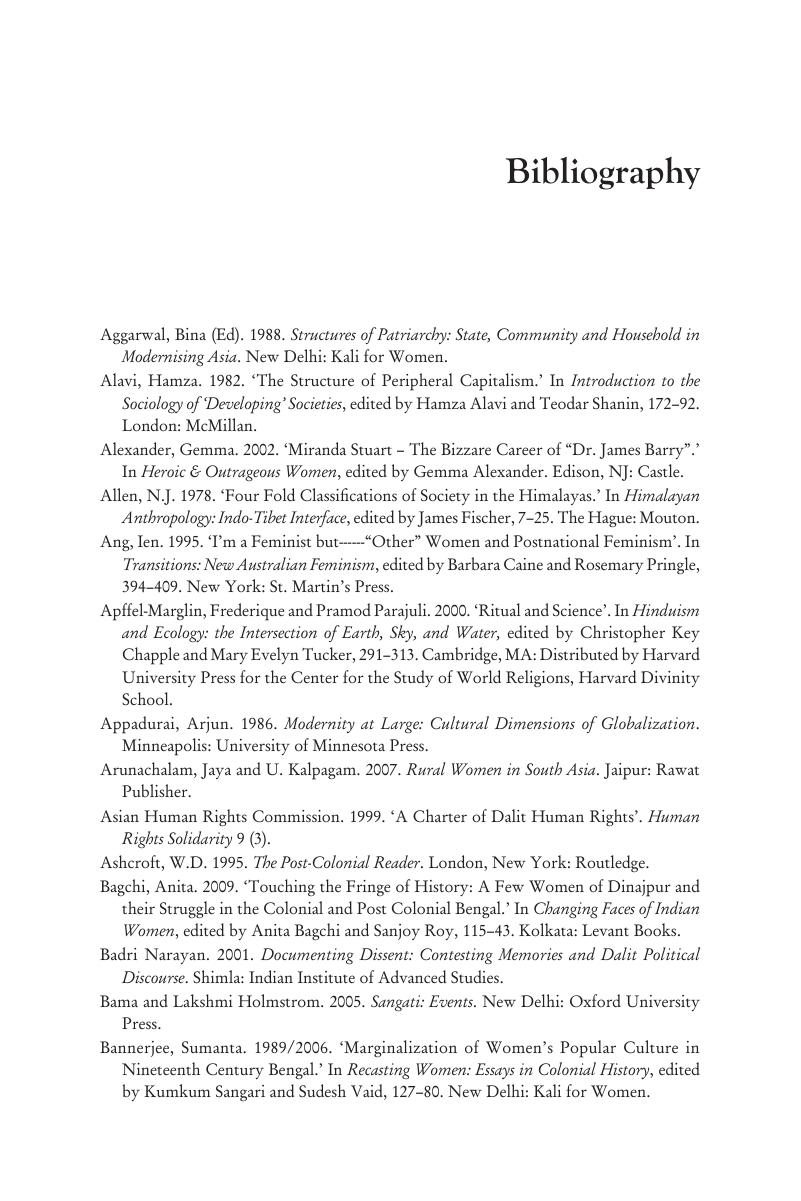Book contents
- Gender in South Asia
- Copyright page
- Dedication
- Contents
- Preface
- 1 Introduction
- 2 Colonial India and the Construction of Upper-caste/class Women
- 3 Elite Women
- 4 Work and Gender Relations of a Low-caste Group in Urban Delhi
- 5 Globalization and the Emerging Gender Issues in India
- 6 Conclusion
- Bibliography
- Index
- References
Bibliography
Published online by Cambridge University Press: 05 September 2013
- Gender in South Asia
- Copyright page
- Dedication
- Contents
- Preface
- 1 Introduction
- 2 Colonial India and the Construction of Upper-caste/class Women
- 3 Elite Women
- 4 Work and Gender Relations of a Low-caste Group in Urban Delhi
- 5 Globalization and the Emerging Gender Issues in India
- 6 Conclusion
- Bibliography
- Index
- References
Summary

- Type
- Chapter
- Information
- Gender in South AsiaSocial Imagination and Constructed Realities, pp. 210 - 222Publisher: Cambridge University PressPrint publication year: 2013



